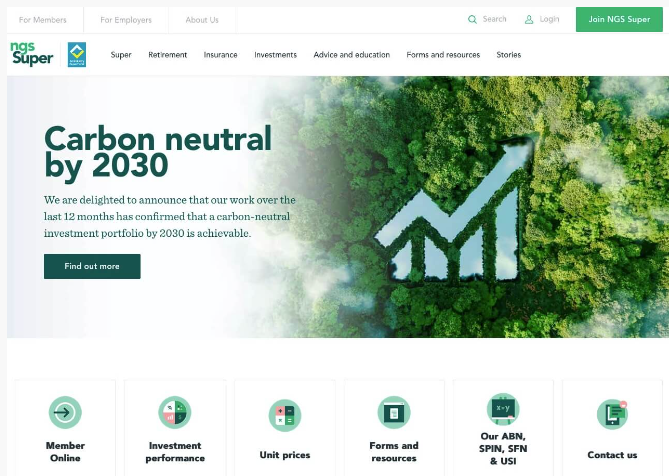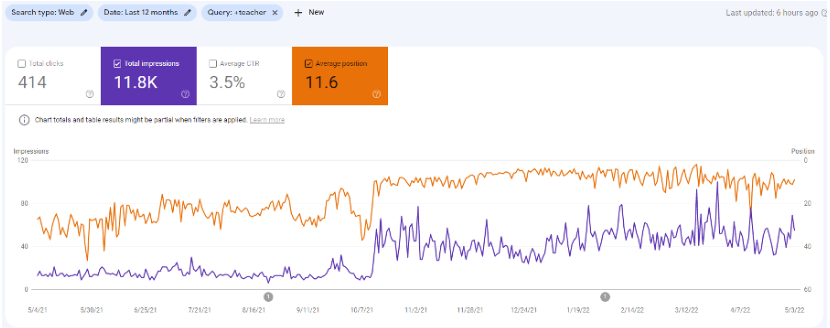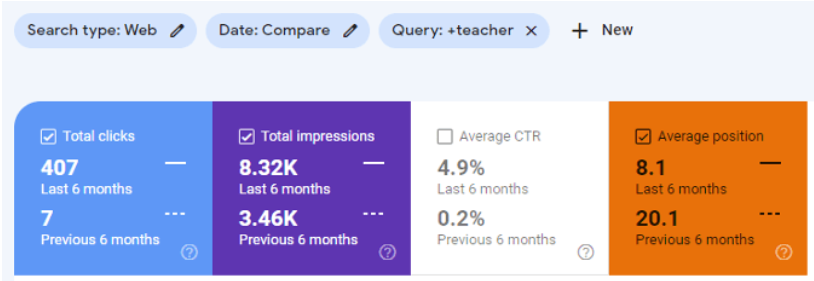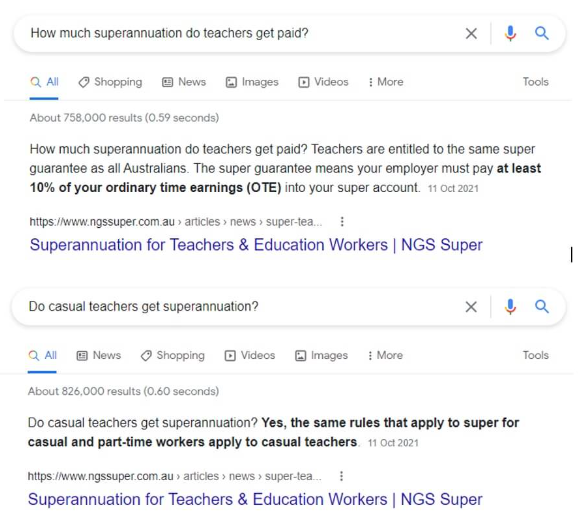What is search intent and why is it important?
By Lewis Torossian, Hannah Mannion and Sam Singleton
Search intent, or user intent, is the user’s reason for performing a specific online search. Every keyword has an intention associated with it that falls into one of four general categories: Commercial, Transactional, Navigational or Informational.
This guide, written by our award-winning and experienced SEO team, is a complete overview of assessing the intention behind specific keywords or search queries so you’re optimising your content for the right ones.
Are they looking to find a specific brand or website? Searching for more information about a topic? Comparing option? Preparing to purchase something?
Let’s imagine you wanted to buy a new car for your family, but you weren’t sure which one you wanted. You may perform a Google search using the keyword ‘best family cars’. You may click on the first result and find it’s a product page of a particular car model on a specific car manufacturer’s website. However, you’re not sure at this stage if this is the car for you, and you would rather read an article which compares several car makes and models. You quickly click on the next result, a listicle review of the top 10 family cars 2022. If enough people do the same, Google will quickly understand that the result they are serving in position #1 for this search query does not satisfy user intent, but #2 does, so they may promote this result to #1 instead.
This is where Google’s goal of meeting user experience needs comes in.
Google Understands Search Intent
Interactivity with a result (time on page, low bounce rate, etc) helps Google to understand the search intent for a newer query but, the search intent for something along the lines of the above example would have been learned a long time ago. Performing a quick search with the keyword ‘best family cars’, we can see that all the first page results are editorial-style reviews and comparisons of a selection of cars from auto blogs and comparison sites, with zero car product page results from car manufacturers or dealerships.
In truth, Google’s algorithm is now powerful enough to understand search intent without much help from user behaviour and interactivity with their search results. There have been several updates over the years which have aimed to aid user intent, with two key ones in the past decade.
Hummingbird update
2013’s Hummingbird update enabled the search engine to understand conversational search queries. This helped Google process a query like a human would, considering the whole query rather than parts of it, which previously led to irrelevant results. For example, if you wanted more information about the nutritional value of white bread, you may search ‘how many calories in white bread’. Before Hummingbird, the SERPs would have been full of white bread product pages from bakeries and supermarkets, as well as articles from health and nutrition sites. This is because the product pages would have been optimised for the keyword ‘white bread’ and Google would have noticed this popular keyword within the search query, and so served those product pages as they generally got lots of clicks for the sole keyword ‘white bread’. They were not analysing the keyword in its entirety and so served these less relevant results.
BERT update
The next big step came in 2019 with the BERT update (a deep learning algorithm related to natural language processing). This helped Google to further understand a user’s search intent by utilising machine learning to decipher context even better and serve users even more relevant results. This is particularly important with the rise of voice search and conversational queries being utilised more often.

The Four User Intent Categories
How to gauge keyword intent
How do you create and optimise your content to rank for a particular keyword? Firstly, you would need to gauge the user intent for the keyword by seeing what type of content already ranks for the search query.
This would be a good time to explain that most search queries fall into the following four search intent categories:
- Informational
- Navigational
- Commercial
- Transactional
Informational
Trying to find more info on a topic
Informational search queries aim to find out more about a specific topic. The type of content usually served for these queries are often long-form, editorial-style articles explaining something in detail, quick FAQ-style answers to a direct question, or videos demonstrating the solution.
‘How to do a backflip’, for example, returns several videos and step-by-step guides on how to manoeuvre, as Google understands the intent the user has for performing the search is to get information to explain how they can do this.
How to optimise for Informational Queries
These queries are usually in question form. They’re longtail keywords and often use ‘what’, ‘when’, ‘where’, ‘why’ or ‘how’. To optimise content to be found for informational keywords and search queries, search for them and see what appears. If most results are videos, we should create a video; if they are step-by-step guides, then a detailed blog post could be written; if they are short answers, then an FAQ-style summary may suffice.
If producing a blog article answering a question, it is always good practice to summarise the answer within the first 40-50 words of the page, then go on to explain in more detail. This helps the page gets pulled into the SERPs as the quick answer featured snippet, which is the result that also gets read out in a voice search.
If writing a step-by-step guide, making each step a subheading (usually H2) with numbers is good practice. This enables us to further keyword target headings & break the article up nicely to aid with readability, but it also allows us to be found for another featured snippet type. In a well-written piece, often, the heading steps will be pulled into the ‘position 0’ part of the SERPs as the first quick answer.
If posting a video on your site to address a specific informational query, it is advisable to optimise the video with a keyword-targeted title, an informative description, closed captions or a full transcript and use schema markup to help it be pulled into the page’s standard organic listing.

Navigational
The user knows exactly what they're searching for
Navigational intent is when a user knows exactly which website or page on a site they want to visit (but don’t know or don’t want to type in the full URL into the address bar), so they type the name of the brand or page into the search engine.
Navigational queries serve to find a particular website or page. In practice, this is searching for a brand or company to find their website through Google. A search for ‘Indago Digital’ returns to our homepage, or a search for ‘Indago Digital SEO’ returns to our SEO services page, for example. These people want to find a specific brand or webpage, so here, we want to make sure we rank well for our branded terms.
The truth is, it’s extremely difficult to target navigational queries as they have obvious intent – the user has a specific website that they are looking for; therefore, anything outside of that tends to be irrelevant.
The focus of navigational search queries is to ensure you own your branded questions. You need to be ranking organically for all branded queries, as they are known to drive conversions.
Commercial
Researching something they intend to buy in the future
People usually use commercial search queries to buy something in the future but want to do some research first. The example around ‘best family car’ would have commercial intent behind it. Commercial queries usually return content that compares similar things (such as a listicle or comparison site) to help users decide what they want to do/buy.

Types of Commercial Searches
Commercial searches come in different forms, with some of the most common being:
- Reviews of a product or company
- Non-branded queries seeking ‘best’ or ‘top’ lists of products
- Brand comparisons
Non-branded queries tend to include phrases such as ‘best’ or ‘top’ plus a product to try and find which products may be considered the best in the market right now.
‘How to’ and ‘which’ related queries are often used, such as ‘how to choose the right vacuum cleaner’ where the user is looking for more information on a product before deciding on purchasing.
How to Optimise for Commercial Intent
Commercial intent is especially relevant for B2B businesses as customers tend to spend a long time researching before committing, and so optimising for commercial purposes can help generate sales.
When optimising for commercial intent, articles that review products tend to perform the best and rank consistently well. Listicle content works well here, too, as this can also target rich snippets, such as the answer box, which drive a higher CTR from the SERPs. An example of this could be ‘Top 10 Wireless Headphones in Australia 2022’, which lists the best products on the market in Australia for the coming year, with a review of each product.
A customer will likely travel through two sales funnel stages during this research stage: decision and action, where their intent may change from a commercial research focus to a transactional focus such as ‘sales’ or ‘discounts’ when looking to buy.
Tools such as Ahrefs Keyword Explorer can help to identify which keywords may be best used to target commercial intent, such as those that will help to generate sales by addressing information queries that will drive users to the website.
Transactional
Card in hand, ready to buy now
Transactional intent is usually used by a web user who is ready to buy something. They are done with their research, and they’re prepared to make a purchase. The search term they use will likely make it obvious, such as ‘buy shoes online’, or it may be less so, for example, ‘size nine tennis shoes’.
Either way, we can see from the search results that Google classes both search terms as having transactional intent, as all the results served are online shoe store homepages or product pages.

Types of Transactional Queries
Google understands the ‘intent’ behind keyword sets and serves results to the user accordingly. So, what makes a query ‘transactional’? Essentially, it boils down to the pre-tense or tail of the keyword, and you will often see variations like:
- Cheap + [product name]
- Where to buy + [product name]
- [product name] + near me
- Buy online + [product name]
- Order + [product name]
It’s also worth noting that local SEO plays an important role in converting transactional queries depending on the product or service type. ‘Near me’ searches tend to have the highest conversion rate among all keyword types. So, whether you’re a mechanic or retailer, you want to ensure you rank locally for these queries.
How to Optimise for Transactional Queries
Queries are multi-faceted and serve different purposes when it comes to achieving your overall goals. When a consumer is looking to purchase a product, the journey often begins with research about the product and ends with a transaction. Optimising your product pages for transactional queries is an important component in capturing consumers in their ‘ready to buy’ phase at the end of the conversion funnel.
These query types are also likely to deliver the most ROI through the organic channel.
The most important consideration to effectively optimise for transactional queries is that the user is ready to buy. Therefore, your on-page content needs to reflect that. Your page and content need to be arranged in a way that funnels the consumer towards a conversion.
Remember, the user has usually done their research by this stage, so content needs to be easily digestible, succinct and product or service-focused. Use the product name as the page title, include clear product images and list the information in bullet form. Keep content to one page only to avoid any scrolling, and include an obvious CTA button underneath.
As we mentioned earlier, content needs to match the intent of the query, and using vocabulary that aligns with transactional intent is a must. Include product-related words and brand names as well as categories and intent modifiers such as buy now, discount, save free shipping.
Put simply, the overall objective when optimising for transactional queries is to keep your landing page fast, easy to read and with relevant content that is product or service-focused.
So, back to the initial question.
How do you gauge the user intent behind a keyword search or search query?
The answer usually lies in the type of search results. If all effects are product pages or online store homepages, the user intent is usually transactional, if they are comparison pieces or reviews, the intent is likely commercial, if they are quick answers, guides, long-form articles or videos, the intent is likely informational.
Knowing the intent will ultimately help you to create specific types of content to rank for your target keyword.
NGS Super Example: Optimising for User Intent
NGS Super is a leading industry super fund for teachers in non-government education and community organisations as one of our clients here at Indago Digital, part of our strategy with NGS was to find ways in which to drive the acquisition of potential new members to the site. We put together a winning strategy which ended up driving and continuing to drive, a high number of new users to the site through optimising for both commercial and informational user intent using the following process.

The Strategy
1. Identify Keyword Gaps and Opportunities
Despite teachers being a huge part of their target audience, we identified that NGS did not currently rank on page 1 for high-value ‘teacher’ + ‘super’ related keywords. We noticed that there was a distinct lack of content which targeted search queries related to super funds for teachers.
| Keywords | MSV |
|---|---|
| Teaching superannuation | 1300 |
| Superannuation for teachers | 210 |
| Teacher superannuation fund best super fund for teachers | 70 |
| Besst super fund for teachers | 50 |
| Non-government schools super | 50 |
| Best superannuation for teachers | 30 |
| Non-government super | 30 |
| Education super fund | 20 |
| Education superannuation | 20 |
| Catholic education superannuation | 20 |
| Non-government schools superannuation fund | 20 |
| Super fund for teachers | 10 |
| Industry super fund for teachers | 10 |
3. Identify Quick Wins
Upon reviewing the content and metadata on the homepage, we noticed that ‘industry super fund’ as a keyword was optimised for in the metadata, but no explanation for the user on what industry NGS served or to whom. Therefore, we identified a quick win: optimising the metadata on the homepage for teacher-related keywords.

4. Identify Content Opportunities
Upon review of the NGS blog, it was apparent that there were currently no articles which targeted keywords around ‘superannuation for teachers’, which highlighted a huge opportunity to rank for these high-value keywords by creating a new article. Taking ‘Superannuation for teachers’ as the primary keyword with commercial intent, the article would capture users directly looking for a super fund for teachers. We also targeted users searching with an informative intent in the article by including a ‘Frequently Asked Questions’ section at the bottom of the page. These FAQs were chosen based on keyword and competitor research to ensure people were searching for these queries.
The Results
Once the article and homepage metadata went live on 11th October 2021, there was an increase in rankings and impressions for teacher-related keywords.

When looking at 6 months compared to prior period, we can see an uplift in clicks, impressions, CTR and rankings for teacher related keywords:

Part of this surge in clicks came from obtaining two rich snippet results from the FAQs section of the article.
The results are evidence that optimising for user intent can be a successful strategy from driving traffic to a website.

Conclusion
Using search intent in your digital marketing strategy provides value to the user by making their search experience easier. By targeting the four different types of user intent in content on your website, you are providing valuable information to the user whilst helping them to find your site quickly when they are ready to convert.
Despite search intent being an invaluable concept, the phrase isn’t officially recognised by Google. However, the top-ranking pages in the SERPs are those which provide answers to query-based searches which have intent behind them.
In short, to reap the benefits of search intent in your digital marketing strategy, create content that provides clear and comprehensive answers to a user’s query as fast and easy as possible and better than your competitors!
Written by
Gary Nissim





